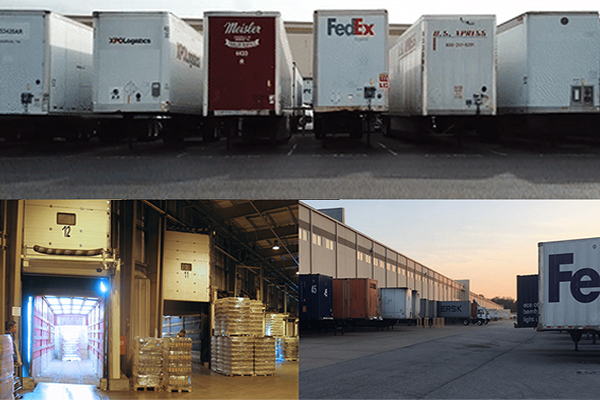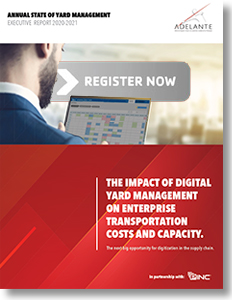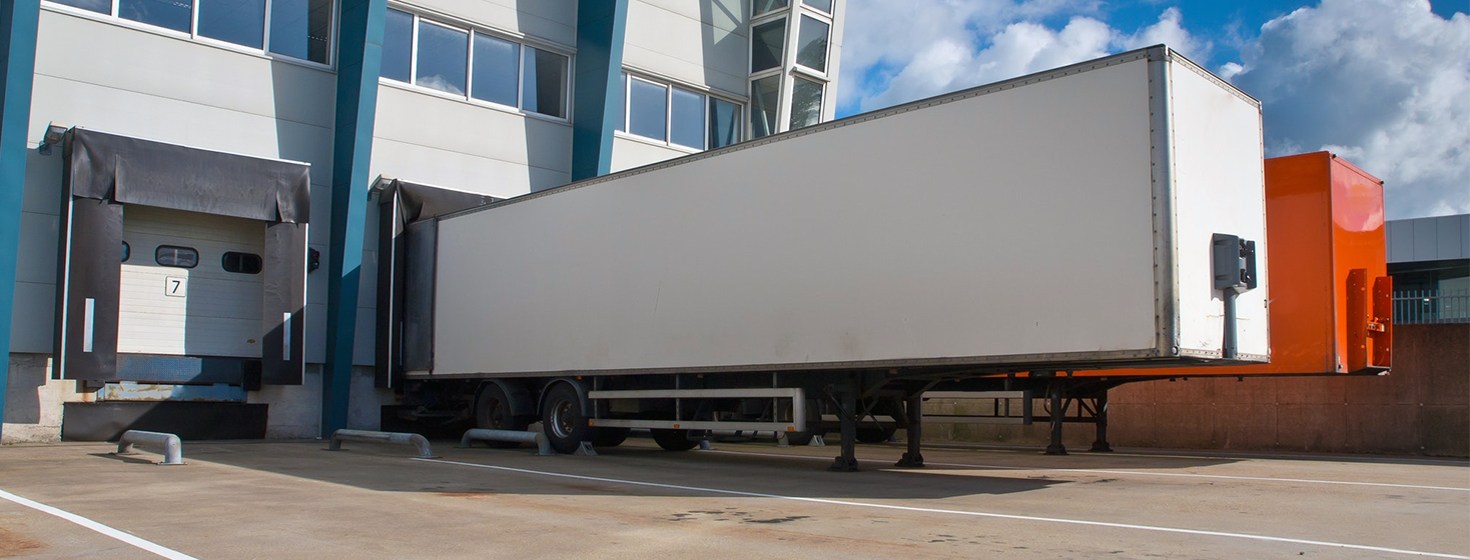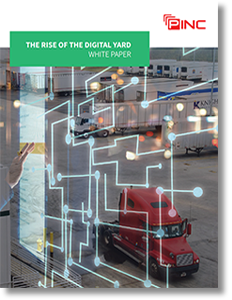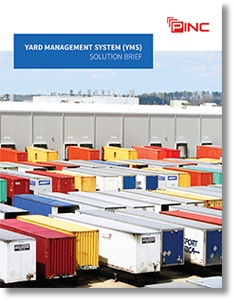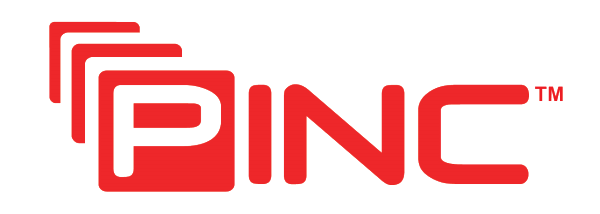2020 State of Yard Management Report: Identifying a Truckload of Savings Across Your Network
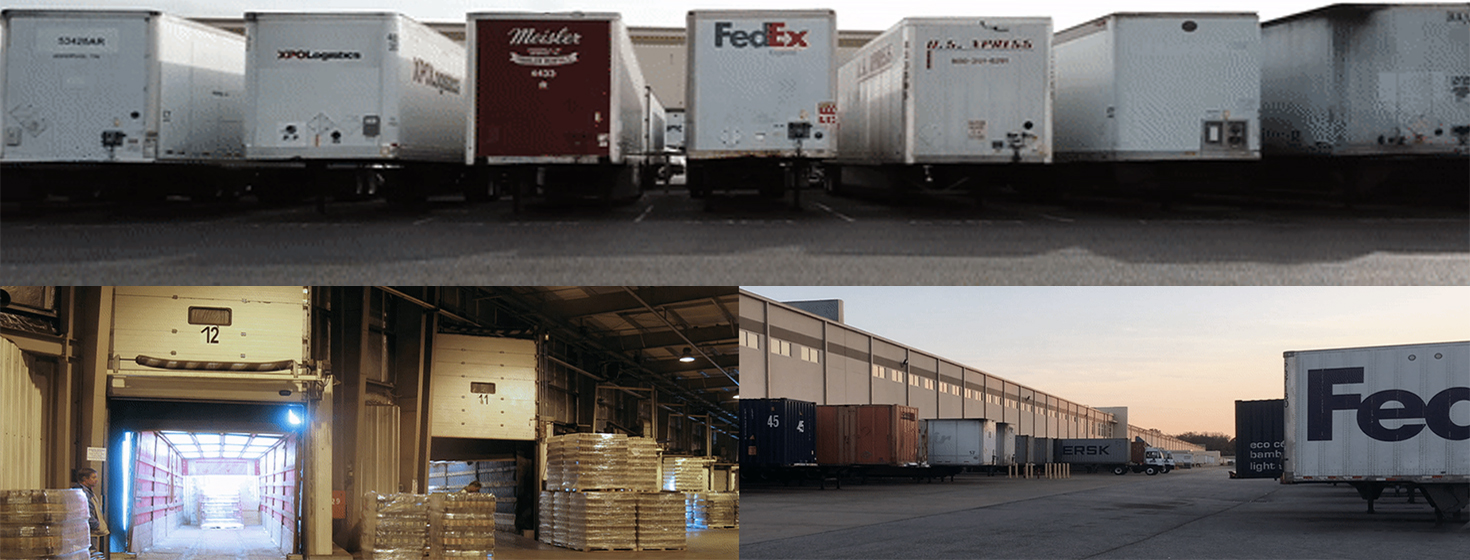
For many companies, the most important limiting factor in their supply chains today - especially in their logistics operations - is yard management, here’s why it’s not too late to bring yours into the 21st Century.
Enterprise Yard Management Deployment
Did you know that if a carrier were to whittle its average pickup and delivery times down by just one hour it would be able to lower its trucking rates by $0.21 per mile and still generate the same volume of annual revenues?
This is just one of many points highlighted in a new market study, the 2020 State of Yard Management Report, with Adelante SCM analyst Adrian Gonzalez, who says many carrier detention problems and other disruptive forces could be solved with an enterprise yard management (YMS) deployment.
According to Gonzalez, 51% of executives and managers recently surveyed say that deploying YMS across the enterprise could help companies reduce their transportation costs by 5% or more.
The problem is that 58% of companies consider their yard management capabilities “average” or worse, a recent Adelante SCM survey found, and about 30% have no visibility over their detention fees.
And while most companies recognize the broader benefits of YMS, with yard inventory visibility being the top-selling point for such systems (according to 88% of survey respondents), many are unsure how to go about making a business case for such an investment.
A Perfect Storm
Market uncertainty, the global pandemic, and changing customer expectations are just a few of the high-level issues impacting transportation right now.
Digging down deeper, unstable freight capacity and ever-evolving guidance from governments and public health authorities are also keeping many logistics and transportation managers up at night right now.
“Trailer yards are playing a vital role as extensions of warehouses, distribution centers (DCs), and manufacturing plants,” Gonzalez says, “and are also the mechanisms for expediting shipments, supporting corporate sustainability goals, and reducing transportation costs.”
The current COVID-19 pandemic is making agility, flexibility, and responsiveness even more critical for success, he adds, and all companies must quickly adapt their supply chain networks and processes in response to these new market realities.
Additionally, DCs and manufacturing plants also want to optimize driver and truck turnaround times and reduce costs while becoming “Shippers of Choice” as hours of service (HoS) constraints push carriers to be more selective. “Companies are looking to do even more to provide a better experience for drivers while they’re onsite,” Gonzalez says.
At the enterprise level, executives need ways to automatically optimize the flow of goods in and out of their facilities. They also want to efficiently manage yard capacities, trailer pool availability, yard service providers, transportation contracts, and accessorial charges from an enterprise perspective.
“For many companies, the most important limiting factor in their supply chains today - especially in their logistics operations - is yard management,” Gonzalez points out, noting that while companies have invested in transportation management systems (TMS) and warehouse management systems (WMS), just 8% are using YMS (according to a recent Logistics Management survey).
By the Numbers
A significant line item in the profit and loss (P&L) statements of most companies, transportation costs have been on CEOs’ and CFOs’ radar screens since 2018, when capacity crunches and driver shortages began taking a bigger bite out of their bottom lines. Limits on the number of hours a driver can be behind the wheel also came into play, with driver detention becoming a major issue for most yard owners.
Mike Mulqueen, Partner, JBF Consulting states;
“While detention fees may be a rounding error for many large shippers, I would urge them to consider the premiums they may be paying through higher contract rates, higher tender rejection percentages, and an increased reliance on the spot market.”
Source: “Detention in Trucking Why Carriers Care (And Shippers Aren't Doing Enough) - Part Two,” Mike Mulqueen, Linkedin, July 9, 2020
According to the Owner-Operator Independent Drivers Association (OOIDA), drivers who comply with the 60-hour Hours of Service rule spend approximately 18% to 33% of their possible compensated drive time in detention, while those complying with the 70-hour rule spend 16% to 29% of their compensated drive time in detention.
“Inefficient yard management processes are a key contributor to driver detention,” Gonzalez says. “Although carriers can charge companies detention fees, which generally range between $25 to $100 per hour, this doesn’t fully cover the costs incurred by the carrier. In addition, many carriers do not even bother to collect the fees because they believe that they will not receive it anyway.”
Delivering Value Across The Enterprise Network
The good news is that it’s not too late for the rest of the world to catch up and start reaping the benefits of YMS. Historically, Gonzalez says the business case for such systems focused on reducing the direct and indirect costs associated with yard operations (e.g., yard jockey wages, detention/demurrage fees, food spoilage, etc.).
“What many companies and senior executives fail to recognize is how big of a constraint (limiting factor) their yard operations are in achieving their overall business objectives,” says Gonzalez, “as well as the true and total financial impact that extends beyond the yard’s four fences.”
Related Article: The Increasing Demand for Digital Yard Management Systems
Related Resources
The Rise of the Digital Yard
In this white paper, we explore the rise of the digital yard and show how technology is enabling significant efficiencies, productivity gains, and cost containment in a world where every penny added to the bottom line positively impacts organizational success. Download Now!
PINC Yard Management Systems: 4 Case Studies
In these 4 Yard Management System case studies, we detail how Pactiv, Batory Foods, Cost Plus World Market, and East Coast Warehouse & Distribution Corp. implemented PINC's Yard Management solutions to increase productivity, reduce expenses, eliminated trailer detention fees, and maintain control and visibility over yard operations, and more. Download Now!
Solution Brief: Yard Management System
Yards are the intersection between warehouses and transportation, they are a critical linkage in logistics management practices and have a significant impact on the overall efficiency of the supply chain. Download Now!
More PINC Resources
Article Topics
PINC News & Resources
Transport Analytics for Enterprise Rail Visibility Mobile Device Procurement, Service, and Support for Industrial & Finished Goods Shippers Merger of Best-in-Class Supply Chain Companies PINC, ShipXpress, and RailCarRX Providing Enhanced Yard Management Services and Solutions to Enterprise Customers 2020 State of Yard Management Report: Identifying a Truckload of Savings Across Your Network The Impact of Digital Yard Management on Enterprise Transportation Costs and Capacity The Increasing Demand for Digital Yard Management Systems More PINCLatest in Transportation
Talking Supply Chain: Doomsday never arrives for Baltimore bridge collapse impacts Amazon Logistics’ Growth Shakes Up Shipping Industry in 2023 Nissan Channels Tesla With Its Latest Manufacturing Process Why are Diesel Prices Climbing Back Over $4 a Gallon? Luxury Car Brands in Limbo After Chinese Company Violates Labor Laws The Three Biggest Challenges Facing Shippers and Carriers in 2024 Supply Chain Stability Index: “Tremendous Improvement” in 2023 More Transportation